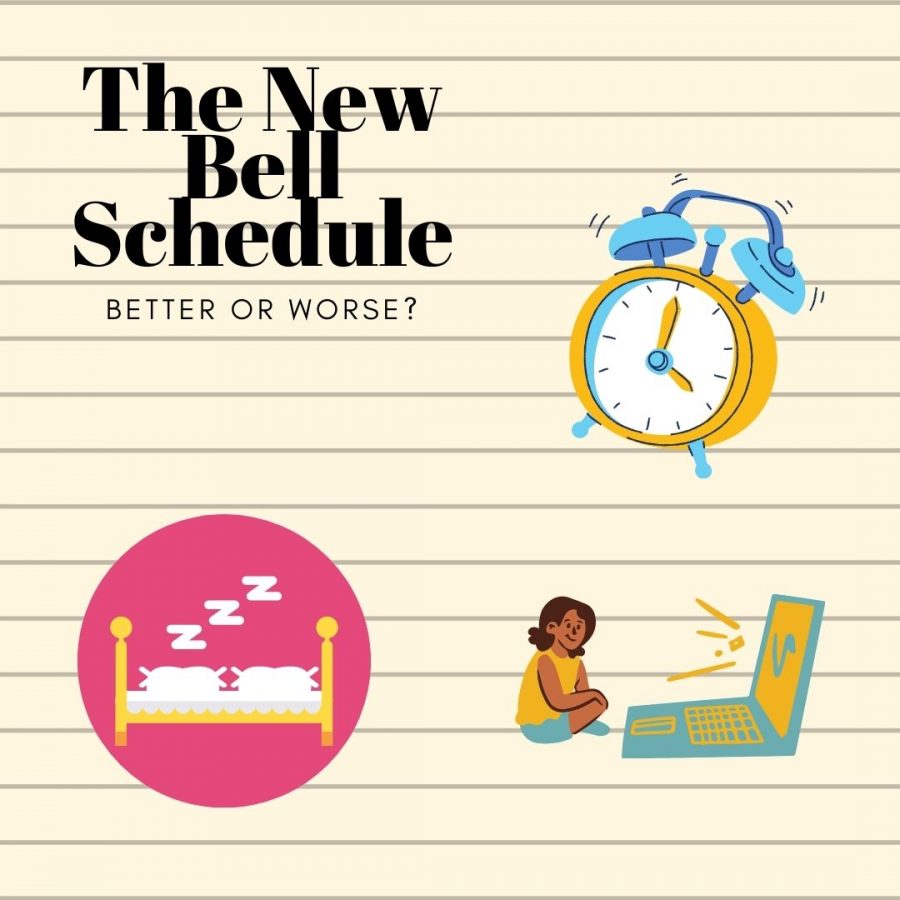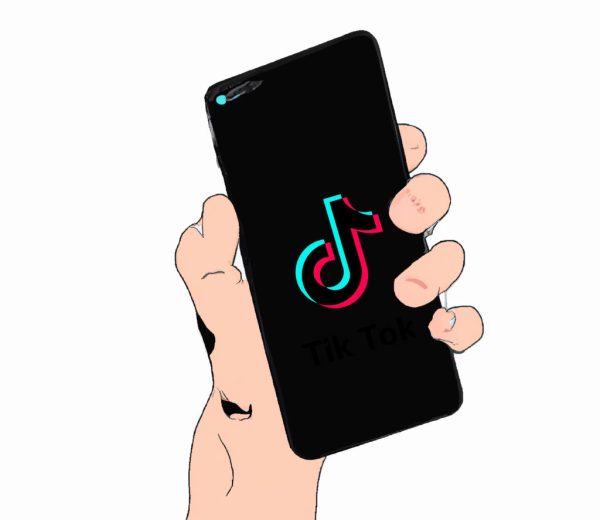Time to Reflect: The Virtual Bell Schedule
During distance learning, school schedules have been pushed back an hour, starting at 8:30 a.m. and ending at 3:30 p.m. Positive effects are sure to be seen following this time change.
Sep 9, 2020
In light of COVID-19, many adjustments were made in order to effectively and safely restart school. That being said, this 2020-2021 school year will be one like no other, starting completely virtually, beginning later in the year than usual and with a pushed-back bell schedule. Some of these changes are sure to have an undeniable effect. The new bell schedule that was implemented for online learning has school starting at 8:30 a.m. and ending at 3:30 p.m. This new shift in times will have a huge positive impact on our students, allowing for a good night’s worth of quality sleep and leeway to fix technical issues.
Teenagers are constantly growing and going through many different changes. As kids transition into their teenage years, their circadian rhythm changes as well. Due to this, their natural sleep schedule gets pushed back, making a teenager’s typical bedtime 11:00 p.m. Our in-school bell schedule, 7:15 a.m. to 2:20 p.m., did not suit a typical teenager’s circadian rhythm. Many students would have had to wake up at six in the morning, or even earlier in order to get to school on time. If those students had gone to sleep at 11:00 p.m., that would have left them with, at most, seven hours of sleep. Not only would students lose time to sleep due to how early they had to get up, but with monstrous amounts of homework, hours would have had to be spent in order to finish. As a result, even more quality hours of rest would be lost, leading to detrimental effects in a teen’s cognitive ability.
A typical teenager needs at least 8-9 hours of sleep every night in order to be properly rested. Getting a good night’s rest is absolutely crucial to staying both physically and mentally healthy. Sleeping well improves your immune system, memory, expansive thinking and even creativity. Conversely, with a lack of sleep, students can suffer from drowsiness and a weakened concentration, thus, negatively affecting their academic performance. Pushing the schedule back to start at 8:30 a.m. allows students to get a little more sleep, which could be just enough to allow them to be well-rested and ready for class the next day.
“The bell schedule we are using right now is better for students because we get to sleep more and students will be paying more attention because it’s not so early,” junior Catalina Castro said.
Even with a good night’s rest, no student can ever be prepared for a day of online school without any difficulties. As we all try to adjust to the new situation we have been put in, we experience the same thing: technical issues. With the servers crashing, WiFi not working and unstable connections, classes have had difficult times running smoothly. However, since school starts later, students are given an opportunity to have more time to fix their technical issues before classes begin without having to wake up at the crack of dawn. If online school began at 7:15 a.m., students would have had to wake up even earlier if they wanted to get a head start on dealing with their dilemmas. Beginning at 8:30 a.m. gives students a chance to be proactive without losing too much sleep, overall leading to a better school day.
On the other hand, some students argue that ending school at 3:30 p.m. is too late and interferes with after-school activities, like jobs, homework, clubs and sports, which some say will cause them to finish things they need to do later than they would have hoped.
“The original bell schedule is more beneficial to the typical high school student because it gives students an extra hour after school to include themselves into activities such as volunteering and sports,” sophomore Sofia Rodriguez said.
Be that as it may, the pros of the new schedule outweigh the cons. For both schedules, it’s almost guaranteed each will have negatives, but in terms of what will benefit students better during school, the new one prevails. Quality sleep is one of the most important things a high school student needs in order to excel academically. And during distance learning, extra time to problem solve technical issues before classes start is extremely helpful in promoting a smooth start to the school day. Although some after-school activities may be pushed back, the advantages of a later start cannot be overlooked.
Overall, the pushed-back bell schedule works perfectly for teenagers right now. Starting an hour later gives students the opportunity to get their rest during their body’s natural sleeping cycles, allowing for quality sleep and leading to improved academic performance. Moreover, during these pressing times when we are all trying to adjust, the pushed back bell schedule gives students more time to figure out and deal with all their technical issues before starting their day of online school. With the benefits of better sleep and the chance to work out technical issues before classes start, students can use this bell schedule to their advantage and make the best out of this new situation.


























